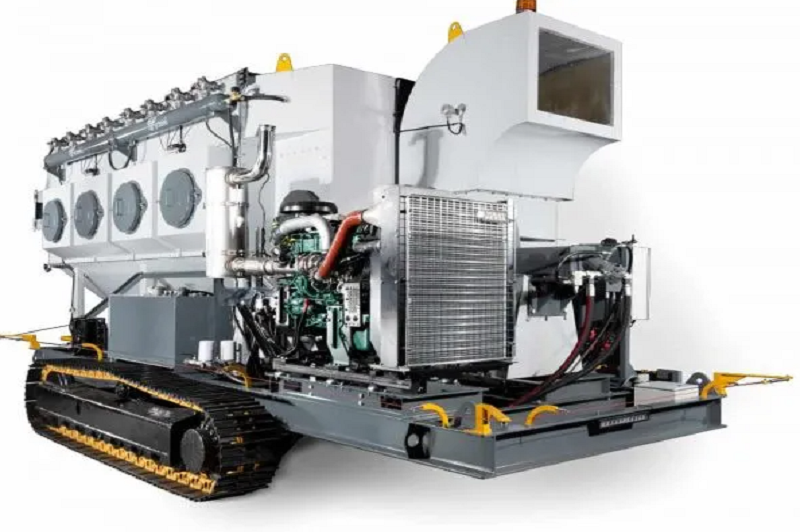Dust is a common problem in many industries, and effective dust collection is crucial for maintaining a safe and healthy work environment. An Australian dust collector manufacturer offers expert advice on how to choose the right dust collection system for your needs and ensure its optimal performance. In this article, we will explore different types of dust collectors, discuss the importance of proper dust management, and provide tips on maintaining your dust collection system. Let's dive in!
1. The Importance of Dust Management
Dust management is essential for maintaining a clean and safe work environment. Dust particles can cause respiratory issues, skin irritation, and even serious health problems for workers exposed to them over time. Additionally, dust accumulation can lead to equipment malfunctions, decreased productivity, and increased maintenance costs.
Effective dust collection serves to protect both the health of your workers and the efficiency of your machinery. By implementing proper dust control measures, you can minimize the risks associated with dust exposure and ensure a safer workplace.
 |
| Australian Dust Collector |
2. Types of Dust Collectors
There are several types of dust collectors available on the market, each designed to handle different types of dust and varying levels of dust concentration. The four main types of dust collectors are:
A. Cyclone Dust Collectors
Cyclone dust collectors use centrifugal force to separate dust particles from the air. As the air is drawn into the cyclone, the dust particles are forced to the outer walls of the collector, where they fall into a collection bin. These collectors are best suited for larger, coarse dust particles and can handle high air volumes.
B. Baghouse Collectors
Baghouse collectors use fabric filter bags to capture and remove dust from the air. As the air passes through the bags, the dust particles are trapped on the surface of the fabric, while the clean air exits the collector. Baghouse collectors are versatile and can handle a wide range of dust types and concentrations.
C. Cartridge Collectors
Cartridge collectors use pleated filter cartridges to capture dust particles. The cartridges offer a large surface area for filtration, allowing for high collection efficiency and low-pressure drop. These collectors are ideal for fine dust particles and can be used in a wide range of applications.
D. Wet Scrubbers
Wet scrubbers use water or other liquid solutions to remove dust particles from the air. The air is forced through a scrubbing chamber, where the dust particles come into contact with the liquid and are removed from the air. Wet scrubbers are particularly effective for handling sticky, explosive, or toxic dust particles.
3. Factors to Consider When Choosing a Dust Collection System
Selecting the right dust collection system for your needs is crucial for ensuring optimal performance and efficiency. Some factors to consider when choosing a dust collector include:
- The type and size of dust particles generated in your facility
- The volume of dust produced
- The available space for installing a dust collection system
- The required air volume and pressure drop
- The necessary filtration efficiency
- The maintenance requirements and costs of the system
By carefully evaluating these factors, you can choose the most suitable dust collection system for your specific needs.
 |
| Australian Dust Collector |
4. Tips for Optimizing Your Dust Collection System
To ensure the optimal performance and longevity of your dust collection system, follow these tips:
- Regularly inspect and clean your dust collector filters to prevent clogging and maintain filtration efficiency.
- Ensure proper airflow in your facility by designing an efficient ductwork layout and keeping all ducts clean and free of obstructions.
- Monitor your dust collection system's performance and address any issues promptly to avoid more significant problems or system failures.
- Train your employees on the proper use and maintenance of the dust collection system to ensure its continued effectiveness.
5. The Role of the Australian Dust Collector Manufacturer
An Australian dust collector manufacturer can provide valuable insights and expert advice on choosing the right dust collection system and optimizing its performance. With their in-depth knowledge of dust collection technologies and experience in various industries, they can help you design and implement an effective dust management strategy tailored to your specific needs.
Additionally, working with a local manufacturer offers benefits such as timely support, easier access to replacement parts, and a better understanding of local regulations and requirements.
6. Conclusion
Effective dust collection is essential for maintaining a safe and healthy work environment. By understanding the different types of dust collectors, considering the factors specific to your facility, and following expert advice from an Australian dust collector manufacturer, you can implement a successful dust management strategy. Regular maintenance and employee training will help ensure the continued performance and efficiency of your dust collection system, protecting both your workers and your equipment.


No comments:
Post a Comment